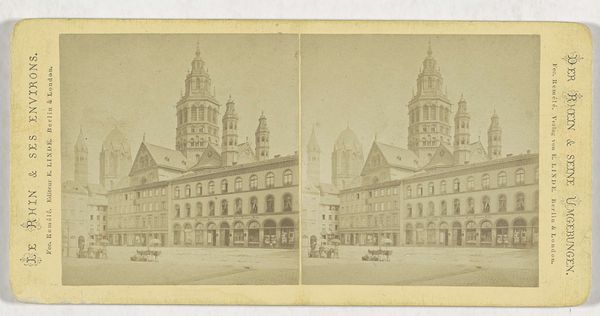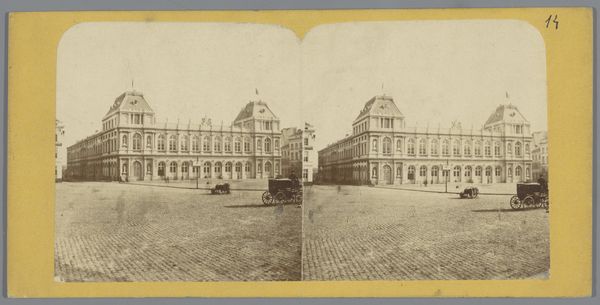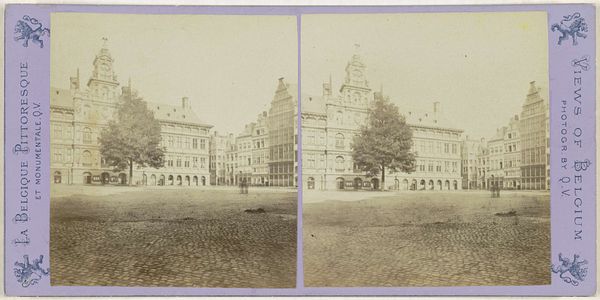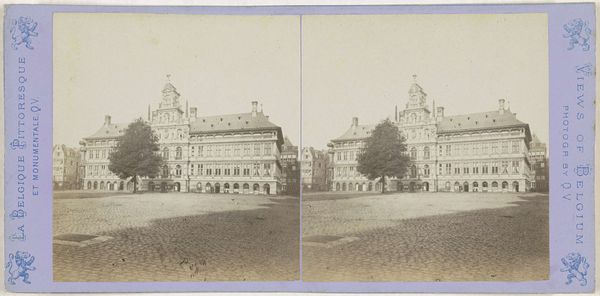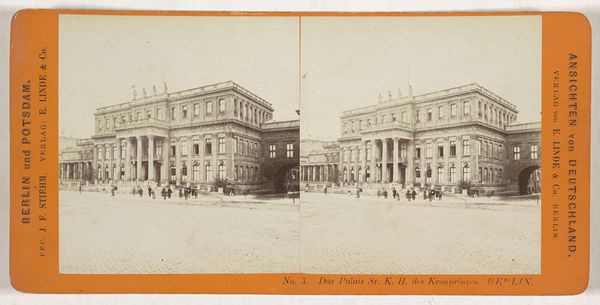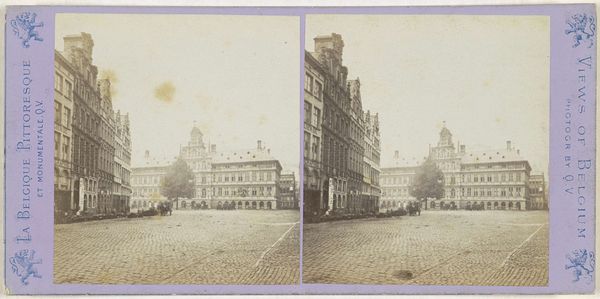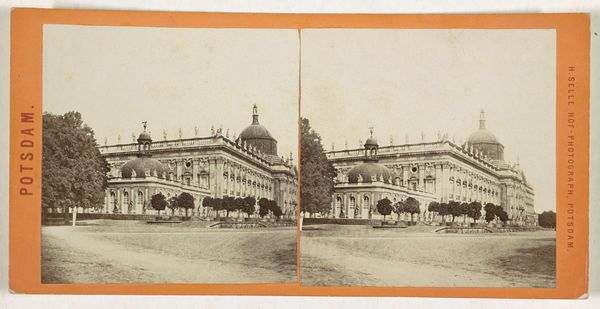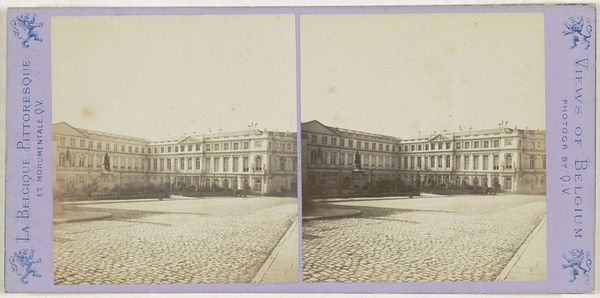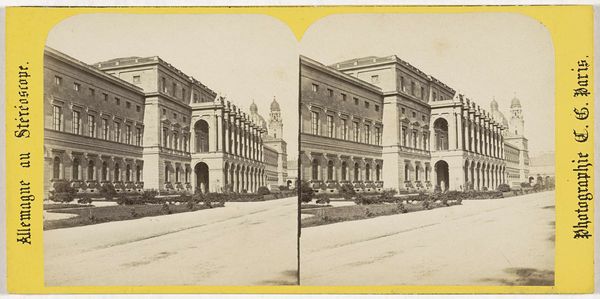
Pellerhaus en de Sankt-Egidienkirche aan de Egidienplatz, Neurenberg 1868 - 1888
0:00
0:00
print, photography
# print
#
photography
#
cityscape
#
realism
Dimensions: height 87 mm, width 177 mm
Copyright: Rijks Museum: Open Domain
Editor: So, we're looking at a photographic print from between 1868 and 1888 by Johann Friedrich Stiehm, called "Pellerhaus en de Sankt-Egidienkirche aan de Egidienplatz, Neurenberg"—that's a mouthful! The sepia tone gives it a real sense of stepping back in time, but I wonder about the almost staged emptiness of the plaza. What do you see when you look at this, beyond the architecture? Curator: The stillness is telling, isn't it? Early photography had long exposure times, meaning capturing people required them to remain still for extended periods, so their absence speaks volumes about the technological and social contexts of the time. Think about how that stillness might contribute to a sense of civic pride or idealization. Does this image reflect how the city wished to see itself? Editor: That’s a good point. It almost feels like a monument to civic order, very controlled and deliberate. So, the composition isn't just about showing the buildings, it's also a statement about power, maybe? Curator: Precisely! The grand architecture dominating the frame reinforces that notion of established power. Consider who was commissioning and consuming images like these. Was it the burgeoning middle class, eager to display their sophistication, or civic leaders keen to project an image of stability and progress? The way public spaces are represented and framed in art significantly shapes how those spaces are perceived and experienced by the public, don't you think? Editor: I hadn't thought about it that way. So, the photograph is not just a document but a carefully constructed piece of propaganda, in a sense? Curator: Indeed. The absence of everyday life directs our gaze towards the institutions of power, shaping the narrative. It subtly reinforces particular social structures and norms. Editor: That’s really fascinating, I'll definitely look at photography with a new perspective now. It’s more than just a snapshot of the past! Curator: It's about understanding how the past wanted to be seen.
Comments
No comments
Be the first to comment and join the conversation on the ultimate creative platform.
